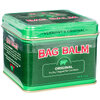Less than laboratory study but I found it interesting. In an effort for all the cases to be the same, I used new Winchester 30-30 brass and an RCBS FL sizer. The spray lubes were used per their instructions, the others using my fingers and a Q tip.
View attachment 1189072
I used a Lee breech lock press and a Rupala fishing scale to pull the handle, it has a little tab that stays at the max load. I only tested 8 cases, was only going to test 4 but the Dillon one shocked me the first pass, so I did another round of all 4 lubes.
The Imperial took 10 & 8.75 lb to size, 13 & 10.75 to come out of the die and 9 & 7.75 for the expander.
Hornady Unique was 10.7 & 10.3 to size, 9.75 & 8.5 off the body and 9.5 & 8.25 for the expander.
Dillon was 6.5 & 5.5 to size, 5 & 4 off the body and 9 & 7.25 for the expander.
Hornady One Shot was 10 & 8.5 size, 13.25 & 12.25 off the body and 12 & 11.5 off the neck.
One might note that all of the 2nd pass were lower than the first, at some point in there I learned that just holding a smaller amount of force for longer resulted in lower numbers and might be more accurate.
It was also not quite a full size, I stopped the stroke short to not hit the stop, back side of the handle was .010" short from where it is when the linkage hits its stop.


